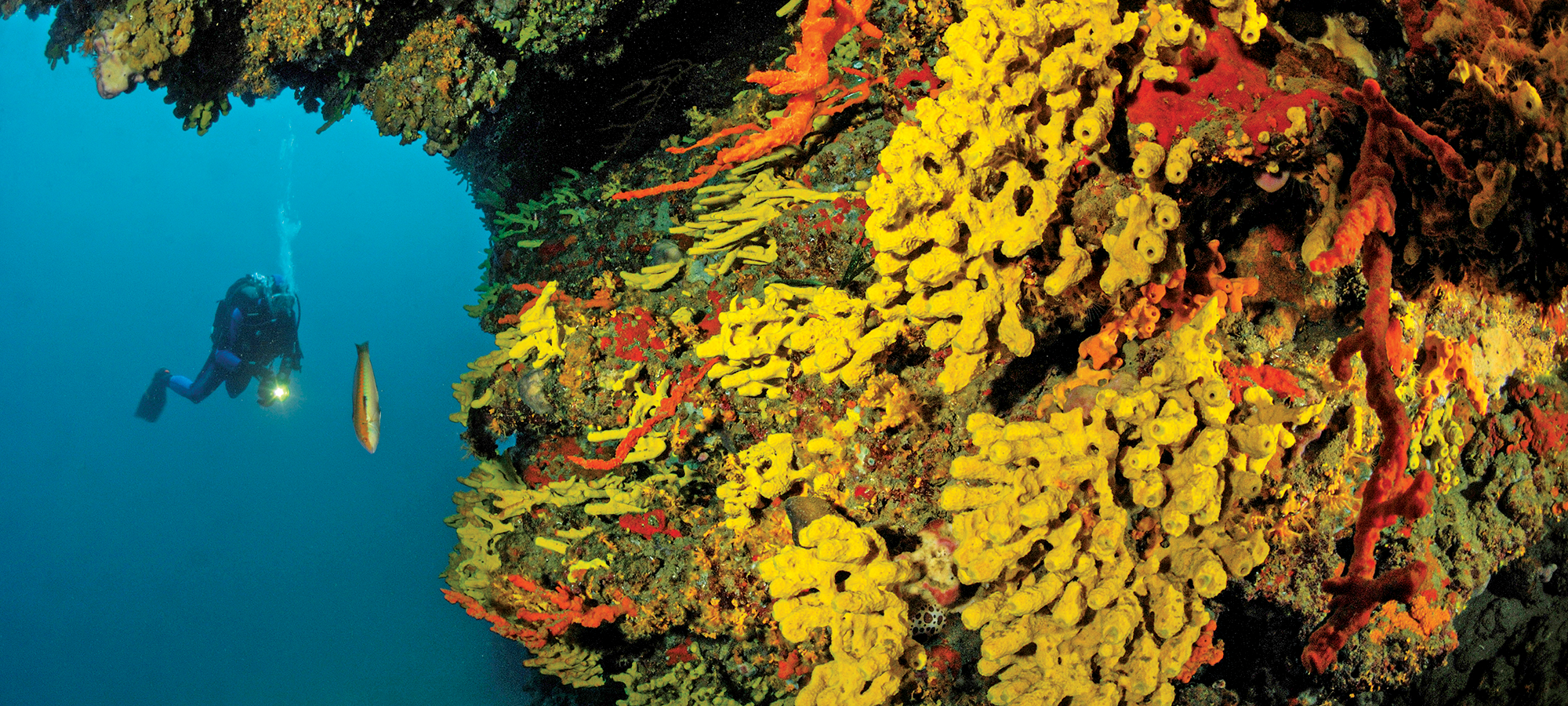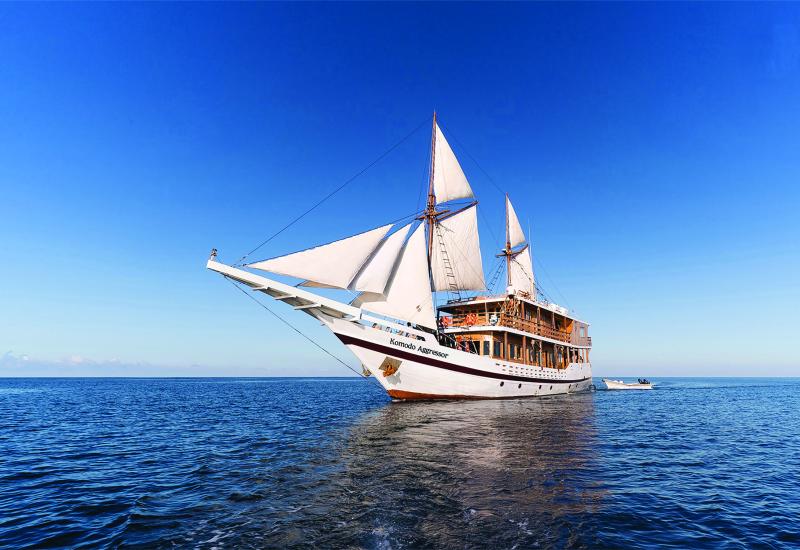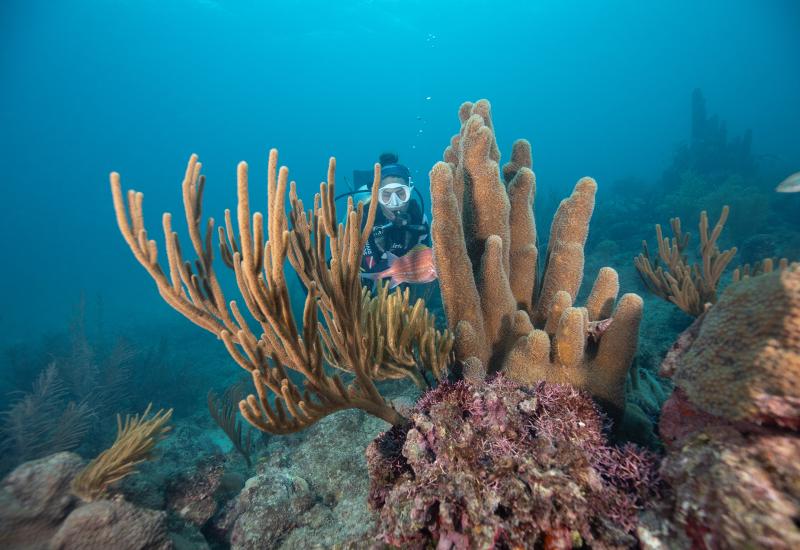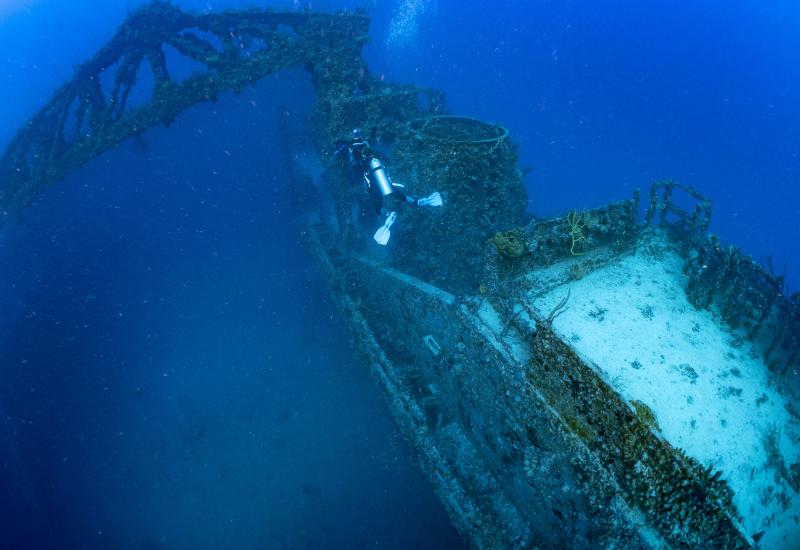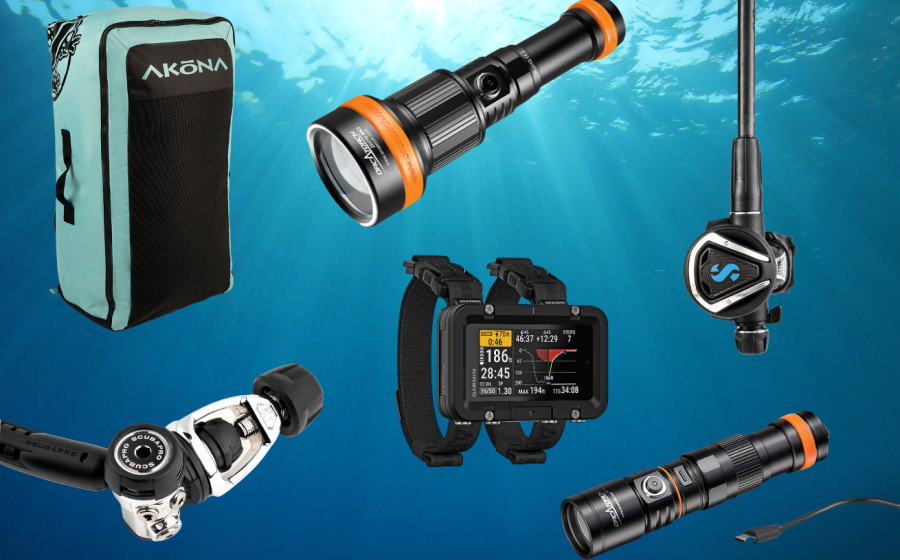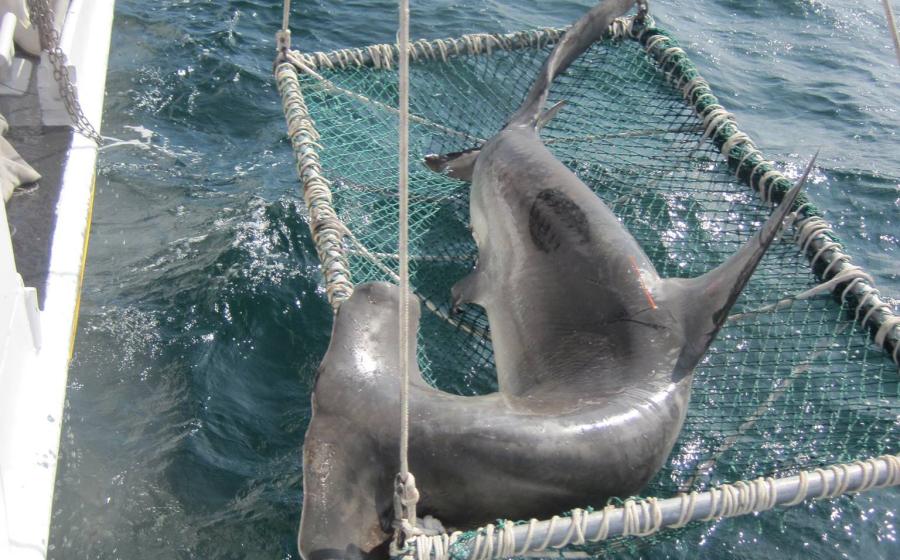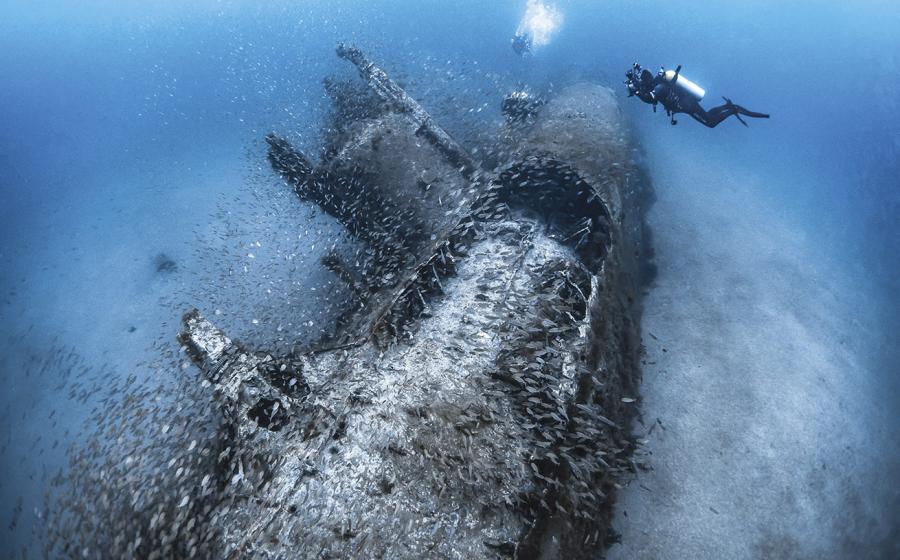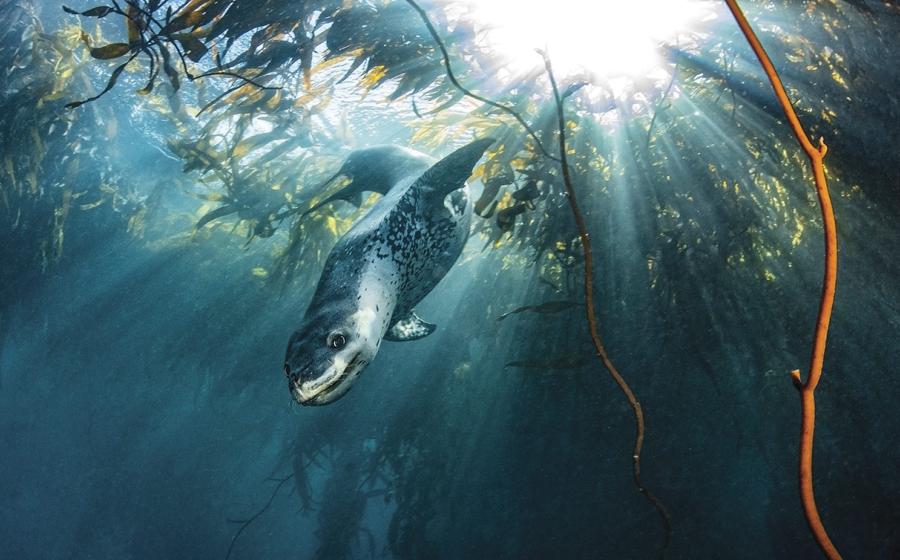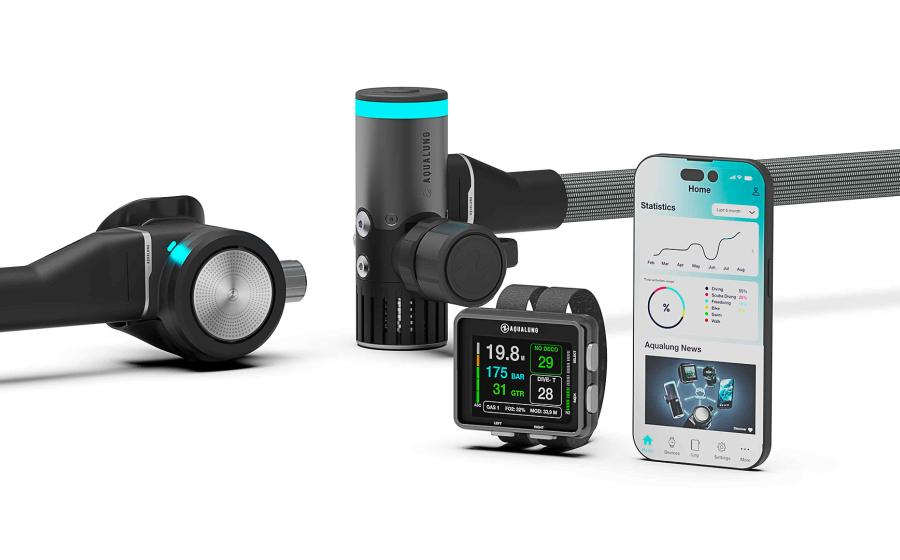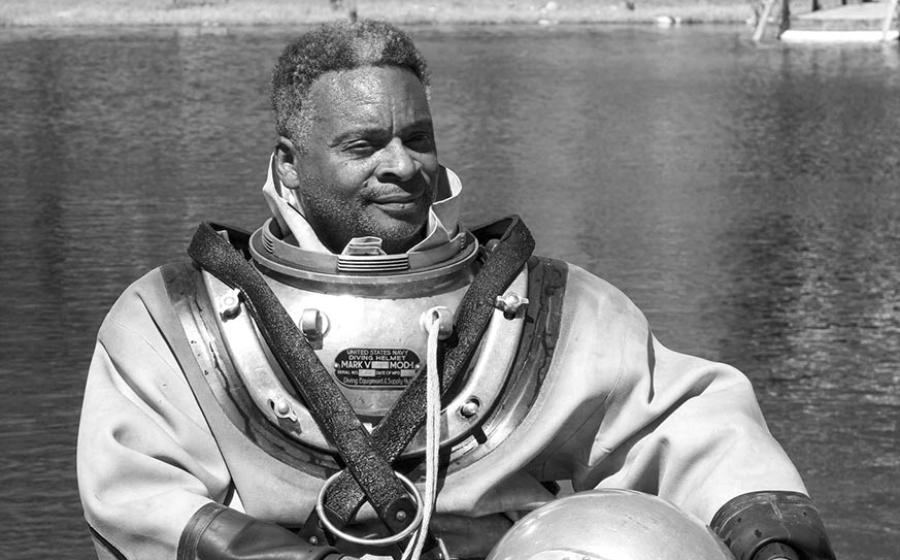I Dived Croatia's Quirkiest Dive Sites. Here's How You Can Too
Weeks before flying to Zadar, I described my next big story idea to a couple of well-traveled scuba friends over dinner: diving in Croatia. I would drive the country north to south, my adventurous buddy Kevin in tow, and visit eight coastal cities. One friend raised a skeptical eyebrow. “It’s not worth diving in Croatia. It’s totally fished out,” he said definitively. My heart sank. I had already invested so much time and energy into planning this trip. Was all this effort wasted on an utterly unremarkable underwater world?
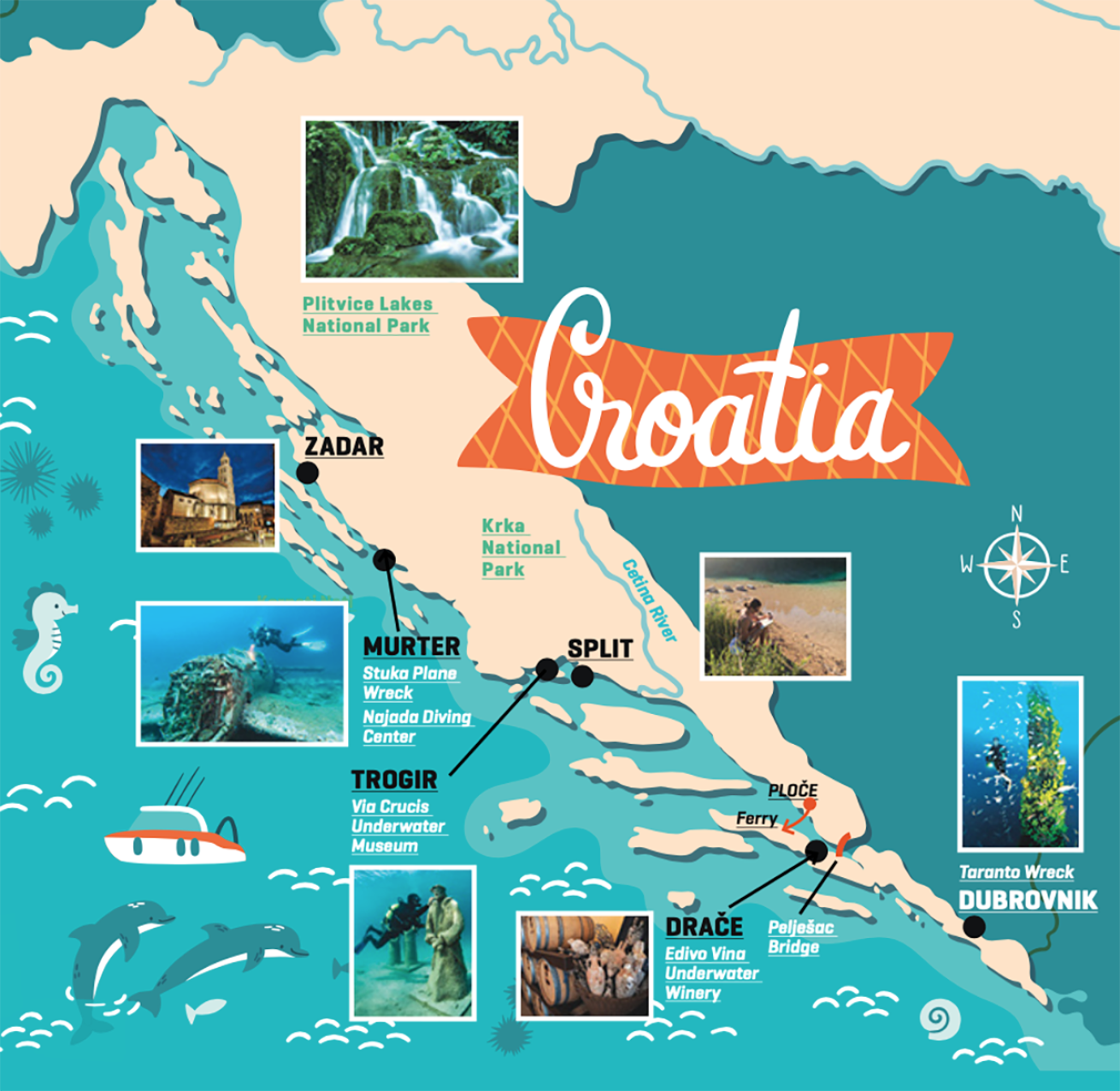
Monica MedinaSimke's adventure took her through eight coastal cities.
Croatia’s topside wonders are no secret. Maze-like marble streets winding like arteries around ornate public squares, centuries-old castles crumbling into the waterfall-filled landscape, and endless Instagram-worthy beaches have turned it into a hot vacation destination. Its underwater attractions are less apparent. In my first hours of online research, the only subaquatic allures I unearthed were its well-known wrecks—a style of diving I don’t love enough to do for two weeks straight. I raked together scraps of information from local news articles, photographers’ websites and the rare underwater photo on social media. Bit by bit, I unraveled a mysterious, wacky and weird world: a blue hole piercing the mountains in a 200- person town, a perfectly preserved plane that plummeted to its demise within recreational diving limits, and droves of wine bottles covered in a living patina, aging under pressure in a Game of Thrones prop ship. Far from nothing to do, there was too much to fit into one trip.
Vindicated, I devised a new plan: Screw the fish, I’d go for the quirks. I plotted my map of the obscure and headed to the airport.
Stargazing by Day
I push open the metal gate to Najada diving center, careful not to let the shop dog, a massive German shepherd named Mepheista, escape. I’ve come here straight from a stranger’s home in Murter. Overnighting in sobes—rented-out rooms in someone’s house—is a customary and affordable way to travel in Croatia.
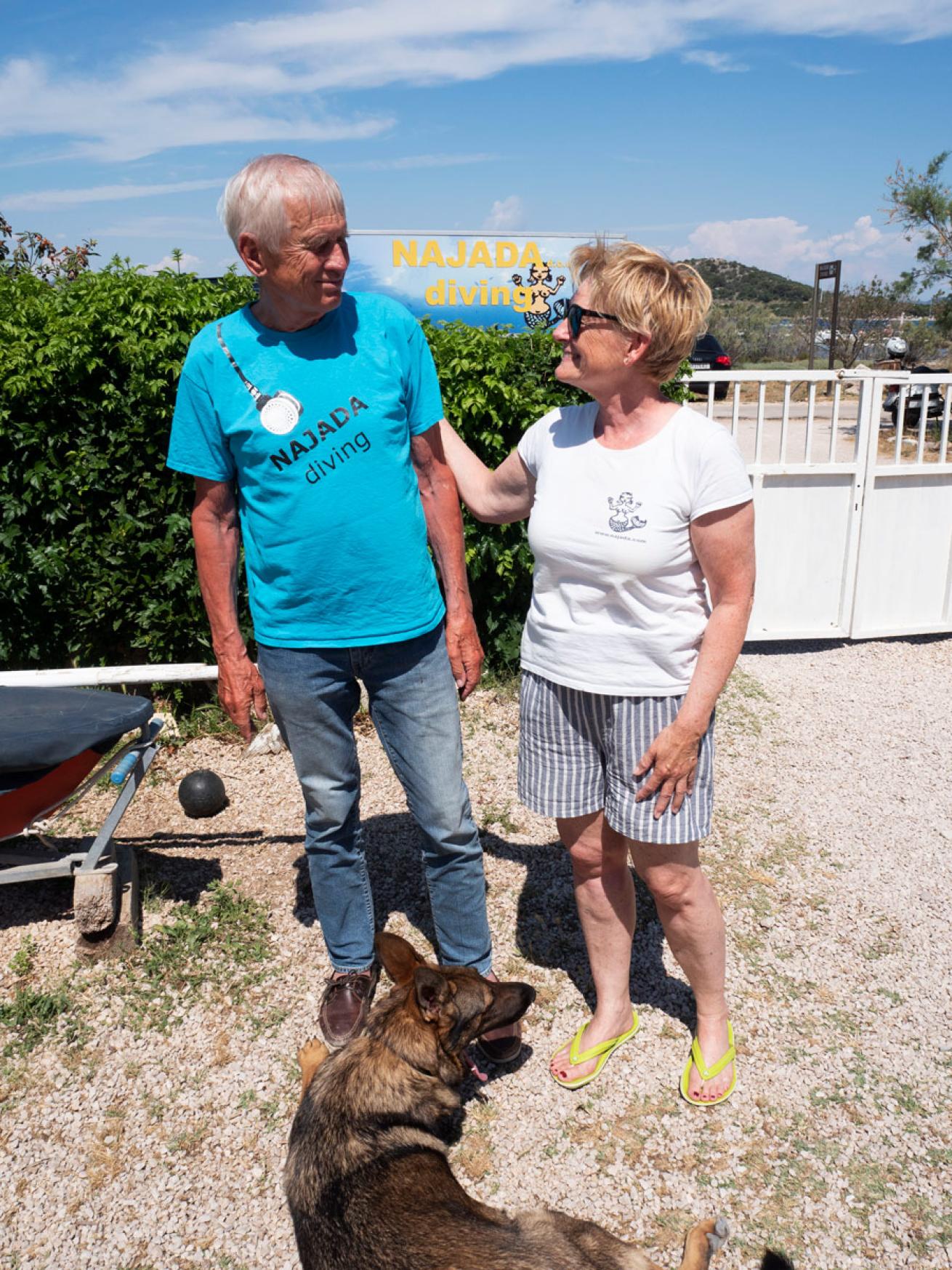
ARIELLA SIMKENajada diving center owners Anna and Kurt with their dog Mepheista.
Najada’s owner Anna approaches me; a grin lights up her face. “Kornati is on!” she exclaims. I’m thrilled. It’s our second day diving with the center, and she knows Kornati National Park is high on my Croatia-diving bucket list. I had all but begged her to send us out there the day before. The park is a series of 89 islands, not far from the town of Murter, and packed with weather-dependent dive sites.
Our dive guide Leo navigates the boat around the whitecaps forming offshore while sucking on a cigarette. Our first stop, the dive site Dome, is a large cavern that reaches a depth of some 150 feet. We sink into the darkness of the cavern. Directly behind me, its mouth glows a Luminol blue. Inside the room, it’s black. That is, until my light illuminates the shining specks of yellow sponges that dot the underside of the hideout. They transform into stars stretching across the night sky. The sharp beam from my torch picks up hints of color here and there—orange, yellow, pink and red—as my ears remind me of the increasing pressure.
“Humans are the first animals to see these colors,” Anna’s husband, Kurt, had told me back at the dive center. “The fish haven’t seen them, but we bring the entire spectrum of light down with us.” Kurt wrote a guide to the region stuffed with maps made from memory. At 80, he has never grown tired of these reefs. After today, I understand why. Gorgonians, multicolor sponges and corals frame the many spineless creatures that crawl, scoot and drag across the reef. Sparkly clusters of fish play on the periphery of my mask, and a sleeping octopus rests in a crevice, reminding me of a dumpling wrapped up in the swaying algae. Its siphon expands and contracts with each breath.
Looking up, I watch my bubbles catch in the honeycomb ceiling, creating crackling pockets of air that dance and jiggle as they encounter their only barrier to the surface. I can feel my wetsuit compress against my sunburned skin; the 65-degree water sloshes in, taming the blaze just a little. My eyes bulge as I attempt to take in the scale of what I am witnessing. I turn toward my buddy, Kevin, who meets my gaze. His giant pupils reflect mine and a wild grin spreads from either side of his regulator, matching my own. We’re in outer space. Time stands still until we finally emerge, speechless, with grins still plastered across our wet cheeks.
Aeronautic Aquatic
Our next adventure takes us to a historical oddity—the Junkers Ju-87 Stuka wreck. A two-man German dive bomber shot down during World War II. It rests 85 feet deep near the island of Žirje and is one of only three of its kind found underwater globally. During the ride out to the wreck with Kevin and Leo, I chat with another dive guide, Aleks. He is covered with tattoos from head to toe and tells me of his many former lives—first as a soldier in the French Foreign Legion, and then as a herpetologist. He shows me a photo on his phone of his hand wedged into the open mouth of an alligator, and another in which he’s milking venom from a cobra. I ask if he’s ever been bitten. “Yes,” he grins, revealing two implanted silver fangs where his canines had once been. While he talks, I catch a glimpse of his tongue, surgically split down the middle to resemble that of a snake’s. But Aleks’ body modifications and reptilian misadventures are not even the most interesting part of my day.
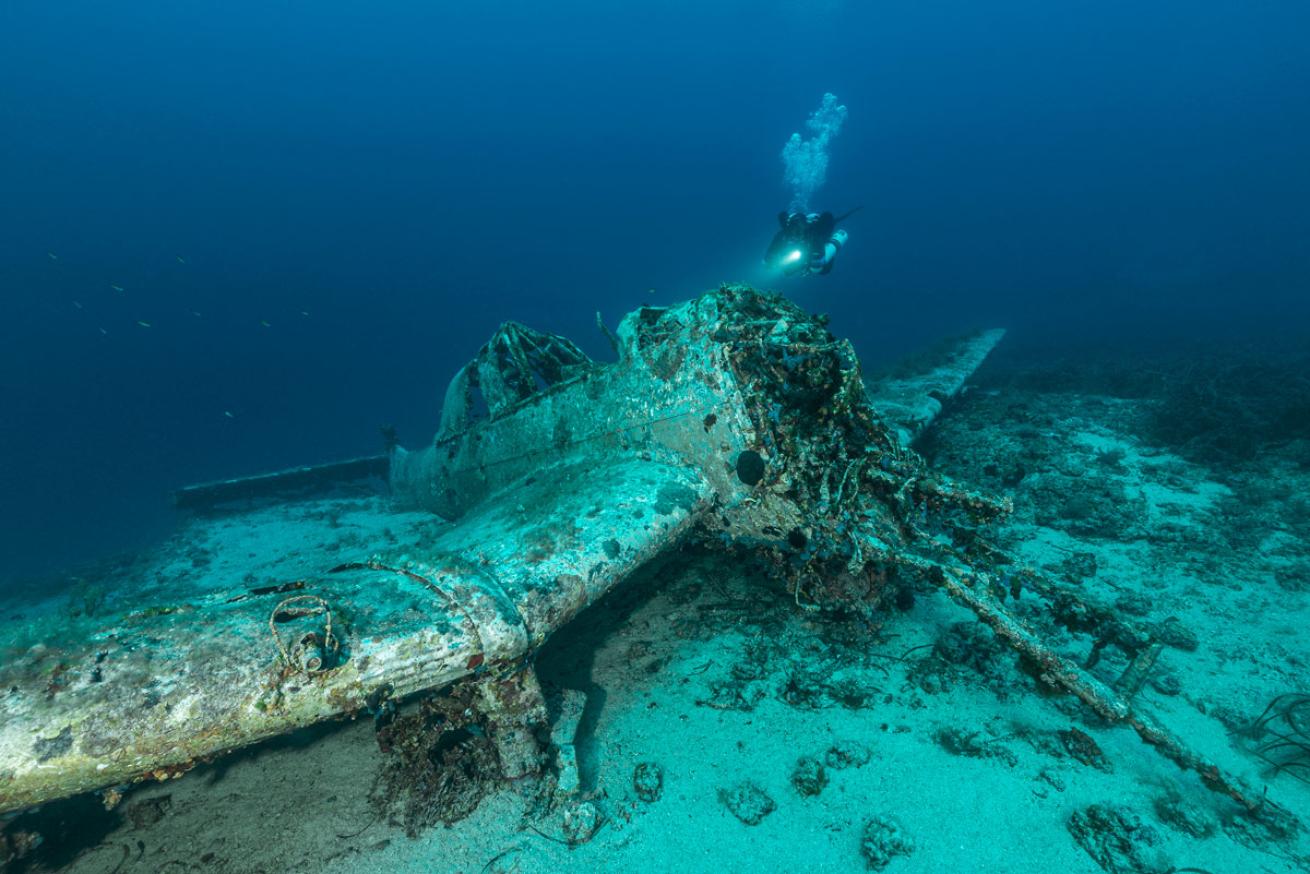
BORUT FURLANThe fully preserved Stuka plane wreck sits in 85 feet of water.
At home in Monterey, California, I often get dive bombed by cormorants—sleek black birds that dig in the sand or race through the water column in pursuit of food. Seeing these birds underwater can cause an alarming cognitive dissonance. They seem like they shouldn’t be down there! Today, that same feeling of out-of-placeness emerges as an unbelievably intact plane at the bottom of the ocean comes into view. We descend in crystal-clear viz, the plane fully visible from wingtip to wingtip. I chuckle at the absurdity. The plane supports a host of life forms that scrawl strange textures and patterns across the gnarled metal. A few colorful wrasse pass by, eyeing us curiously. I swim over to the plane’s amputated engine, lying several feet from the main body, and imagine its deafening roar as it made its final nauseating dip toward the water. Both pilot and rear gunner are thought to have survived the crash given the missing cockpit dome—and the lack of human remains.
Back on the boat after our 28-minute dive, I sweat inside my thick wetsuit and Leo lights up another cigarette. Tomorrow we head into the eye of the dragon—a mystical inland spring, out of place and ridiculously beautiful, in the foothills of the Dinara mountain range.
Into the Dragon’s Eye
The next morning, my bare feet stumble clumsily over sharp arrows of limestone rock that litter the edge of the spring. I take a deep breath, readying myself to plunge into the frigid 40-degree water. Before I can question that decision (again), Kevin and I trudge forward and—in only bathing suits—fully submerge.
My bare skin seizes in the bitter cold. It screams out for the warm embrace of the 75-degree summer air. The pins-and-needles don’t melt away until I reemerge on the shore. The aching in our joints eases enough for us to slip into our 7 mm freediving suits at the spring’s edge. Scuba diving is not allowed here without a permit, so we left our tanks behind. Time to freedive.
From above, this peculiar spring resembles a dragon’s eye—layers of blue and aquamarine cascading into an indigo center. A drone whirs above our heads, no doubt capturing the iconic bird's eye image of this once-hidden gem. The spring is the source of the Cetina River, which flows for about 65 miles before dumping into the Adriatic Sea. No one is certain how deep it descends, but technical divers have reached a depth of over 300 feet—and these untold depths are filled with the bluest, clearest water I’ve ever seen.
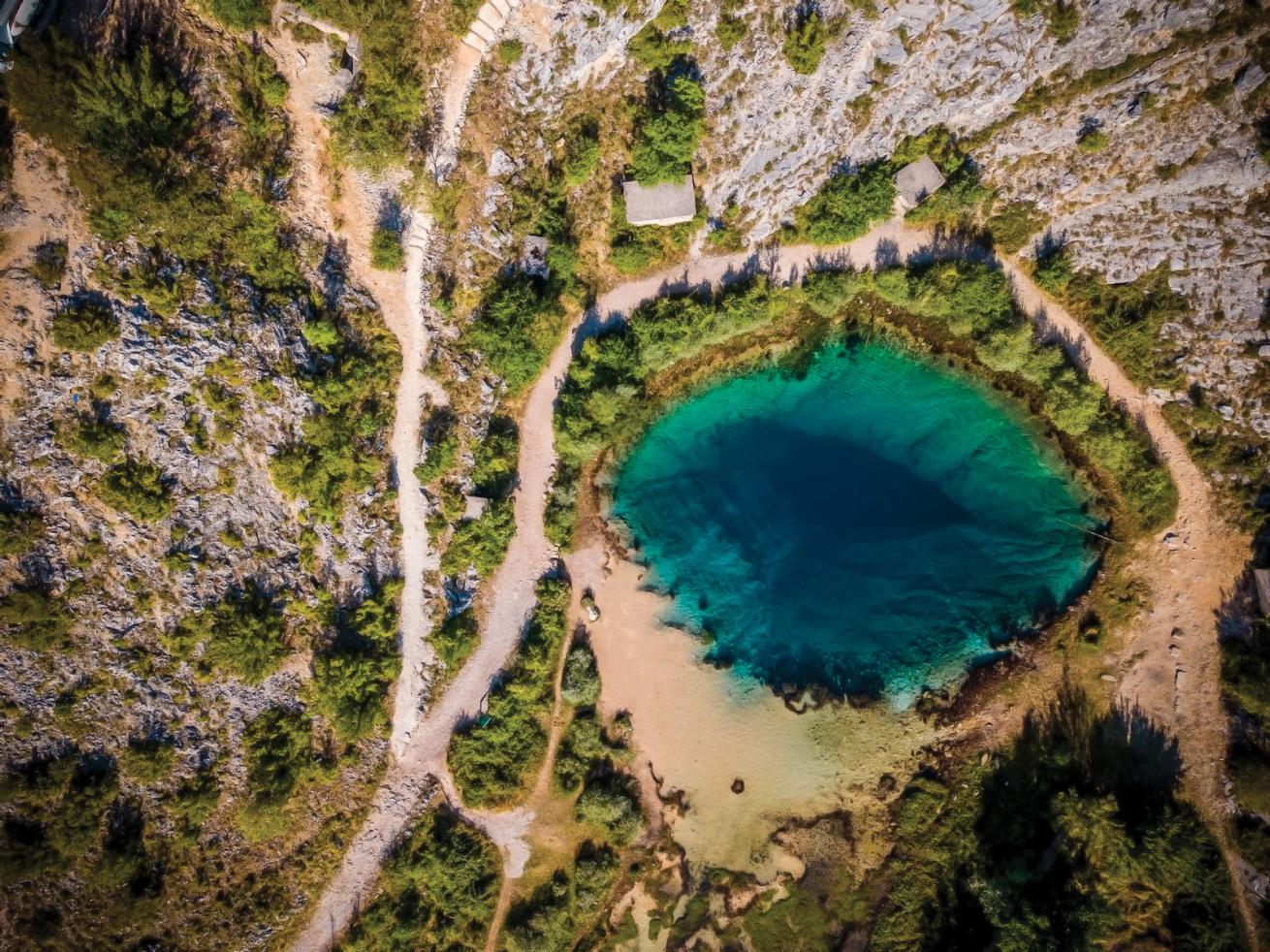
LUKAS_VEJRIK/SHUTTERSTOCKThe iconic bird's-eye view of the spring.
What used to be a local hideout has become more of a tourist draw in recent years thanks to social media. But while more visitors know about the spring, local infrastructure limits the flow of outsiders—the roads are rough and narrow, and there is no parking lot or bathrooms. Swimming is currently allowed, but according to a local news article published months after I returned home, that may soon change due to local concerns over the rise of tourism and the lack of regulation. Today, though, only a handful of other people join us on the banks, wading in with inflatable pool toys in tow.
We slither back into the water fully equipped with more insulation and fewer pained yelps. Dipping my masked face into the crystal-clear water, I gasp through my snorkel. It’s like peering into the mouth of a serpent and seeing straight down into its throat. I can picture the twisting limestone tunnels, carved out by flowing waters hundreds of feet below me. I take a slow, deep breath through my snorkel, filling my lungs before shooting down headfirst into the hole. Layers of limestone rush past as I kick deeper. The pressure builds and my lungs feel constricted.
I have never before battled with thalassophobia—the fear of deep water—but alone in the bowels of this spring, surrounded by dark liquid, new primal feelings begin to emerge. Nothing lives here but endemic trout, and yet, somewhere in my lizard brain I feel a discomfort, the gut feeling of fight or flight. I turn and swiftly close the distance between me and Kevin, who is watching from the surface. We dry off on the banks before heading for the historical city of Trogir, where a bizarre underwater museum draws the curious offshore.
Jesus Christ, Subaquatic
Blue Nautica is bustling. Tours packed with mostly young, mostly Croatian or German tourists gather out front of the tiny dive center around instructors giving rapid-fire briefings. Our divemaster Duje is in a state of perpetual stoke. His seemingly endless supply of energy infuses excitement into me and the group of new divers about to get their fins wet for the first time. On the boat, Croatian pop music blares over the sound of the wind rushing by. Five minutes later we pull into a protected bay where more than 40 statues are planted in the sand 15 to 20 feet down.
I’m not sure what to expect from this “museum,” but I follow Duje into waist-deep water as we start off on our leisurely tour. Before today, I was unfamiliar with the concept of the Stations of the Cross, a Catholic devotional honoring Jesus’ last days on earth, but now the story of his crucifixion unfurls before my mask. This is no ordinary museum day. I hover before one depiction at eye level, then exhale to gaze at another closer to the sand. I can observe every angle, every detail, in the changing light. We fin toward the final statue—Christ, with his arms outstretched and face tilted toward the sun as if about to perform a dramatic mask-clearing maneuver. He dwarfs the iconic Christ of the Abyss statue in the Florida Keys, standing approximately 10 feet high, and begets a feeling of reverence by sheer size alone.
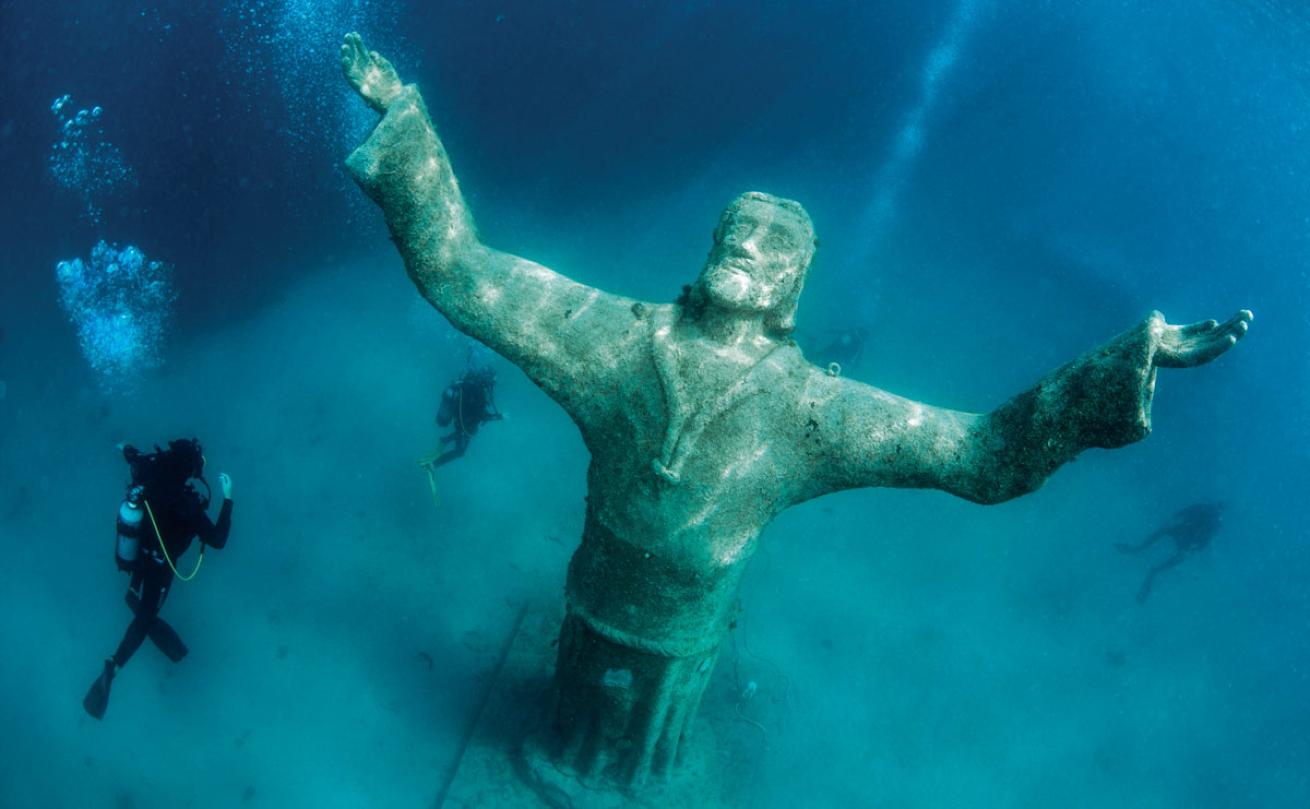
ŽELJKO GRGIĆA 10-foot-tall Jesus Christ statue erected at the Via Crucis underwater museum in the Stations of the Cross installation.
Before surfacing, we stop at the single secular installation, a sunken plane. Unlike the *Stuka *wreck, this one welcomes interaction. Duje motions for us to let loose, and we spend our remaining air climbing into the cockpit and removing our fins to run across the wings. On the surface we watch two of the first-timers emerge smiling. Duje beams with pride when they announce their plans to get certified. As for Kevin and I, we are ready for a drink. We pack our gear and head to a waterfront bar in old-town Trogir.
A church bell tolls in the tower of an 800-year-old marble church. The reverberation echoes in my waterlogged ears and I take another sip of white wine. It’s 87 degrees, and my T-shirt is sticking to my skin like an open-cell wetsuit. An industrial-strength oscillating fan spits out a fine mist of cool water. My only salvation. The churches surrounding Trogir take on new meaning after this morning’s dive at the Via Crucis underwater museum. After draining the last drops from our glasses we hit the road again to the Pelješac Peninsula, Croatia’s famous winemaking region, where another oddity—and more wine—awaits.
Wine and Brine
We arrive in the Pelješac Peninsula via ferry and navigate winding roads to the tiny coastal town of Trstenik. We settle on the outdoor patio of D’Oro restaurant and the aroma of our sweet lobster draws five plump cats to our ankles. They station around our table like the King’s Guard. Nostrils flare to capture the full aromatic bouquet, and pleading eyes fixate on our plates.
Raising a glass to my lips, I drink in the wine made from the plavac mali varietal grapes that put this region on the map. Winemaking is a way of life here. The grapes grow at jaw-dropping inclines, ripening to perfection under the Mediterranean sun. We came to tour Edivo Vina—the country’s first underwater winery, where bottles are aged 60 to 80 feet below the surface. Our first stop on the tour: a ship used in the filming of Game of Thrones that functions as an underwater cellar offshore of the sleepy town of Drače.
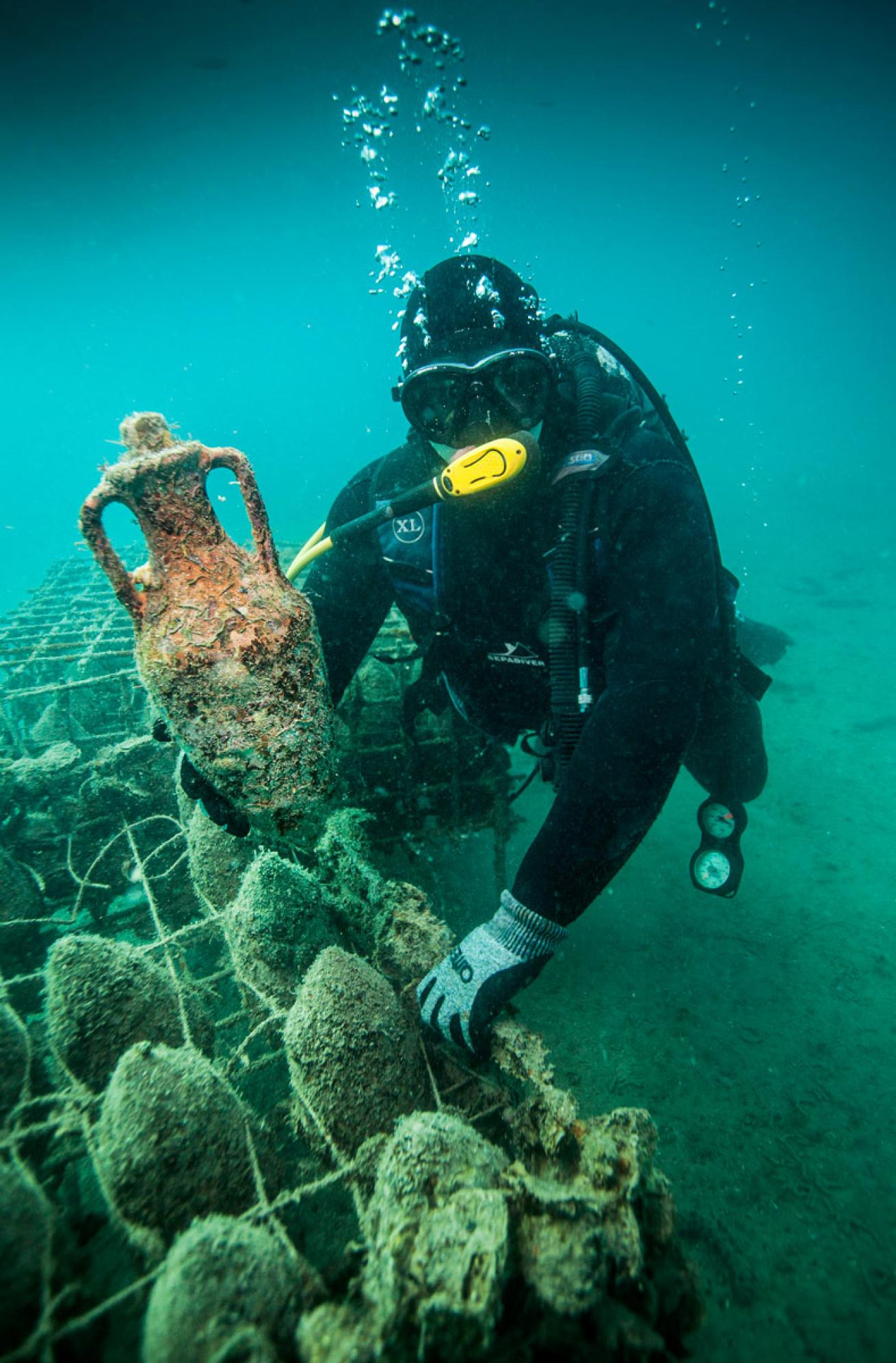
ŽELJKO GRGIĆA diver holds up a bottle of undersea wine.
After gearing up at the winery’s tiny dive locker, we take a short drive and even shorter boat ride past oyster farms and out to the site. We follow a permanent line leading from the dock to the underwater cellar. Obscured by the hazy water, the ship appears suddenly, the deck filled with stacked crates of clay amphorae—containers traditionally used to store wine and other goods—resembling cartons packed with eggs. As we poke around the deck and inspect the amphorae our guide harvests some juicy oysters to enjoy after the short dive.
Back at the wine bar, manager Nevena describes the aging process we witnessed. In 2009, when the first cohort of 350 amphora-clad bottles took a dive, “everything that could have gone wrong, went wrong,” Nevena says. “At the beginning, we lost 50 percent of the bottles.” They’ve since learned how to properly seal the bottles with wax and cement to keep wine in, and seawater out. Once capped, some bottles are attached to ropes and left to hang, “naked,” in the water column, while others are placed inside the locally made amphorae that are filled with insulating foam to prevent breakage. Finally, they spend the next one to two years aging in perfect winemaking conditions under the sea.
Underwater aging protects the wine from light, keeps it at a consistently cool temperature and prevents oxygenation. It is also said to decrease tannins, balance acidity and create a richer, more complex flavor, all claims that I personally verify during the side-by-side tasting that afternoon. As the first sip of undersea wine, a red called Navis Mysterium, fills my mouth and slides down my throat, my eyes widen. The rich flavors come to life, made even more mouthwatering by the pairing of local olives, cheeses, salted fish and gluten-free bread made on-location at the Edivo Vina bakery. We sit in bliss, relaxing into the warmth of subtle intoxication creeping up to our cheeks.
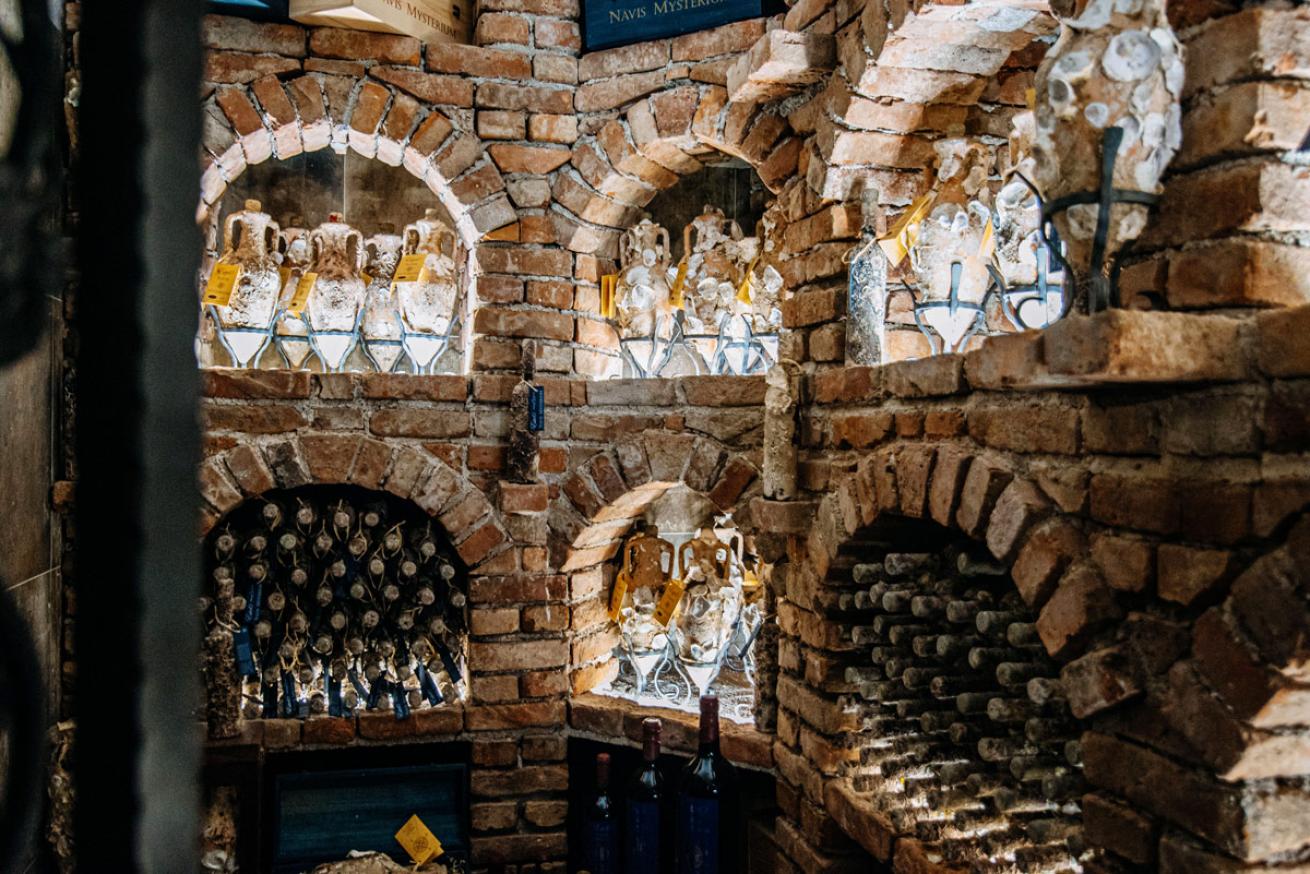
COURTESY EDIVO VINA WINERYEdivo Vina’s wine cellar on the surface
After nearly two weeks on the road, Kevin and I are weary, salty and jazzed. Croatia has delivered, but we have yet to experience the wrecks that draw an international crowd. My internet sleuthing has uncovered the possibility of wreck diving in our final destination of Dubrovnik. After taking some time to sober up, we are on our way. As Drače retreats in the rearview mirror, a passing sign sends us off with the beautiful phrase: “Vino, 1.99 Euro.”
Metal Beasts
The shiny white marble slabs that make up Dubrovnik’s old city streets are both beautiful and dangerous. I step cautiously in flip-flops, placing the weight in my heel before rocking forward on my toes—a survival technique honed by many icy Boston winters. Sweating under the June sun, Kevin and I drag our bags down the steep staircases that lead to the center of town. Clunk, clunk, clunk. The wheels of my overweight suitcase slam down onto each successive step as I snail forward, biceps straining. Only five more staircases to go.
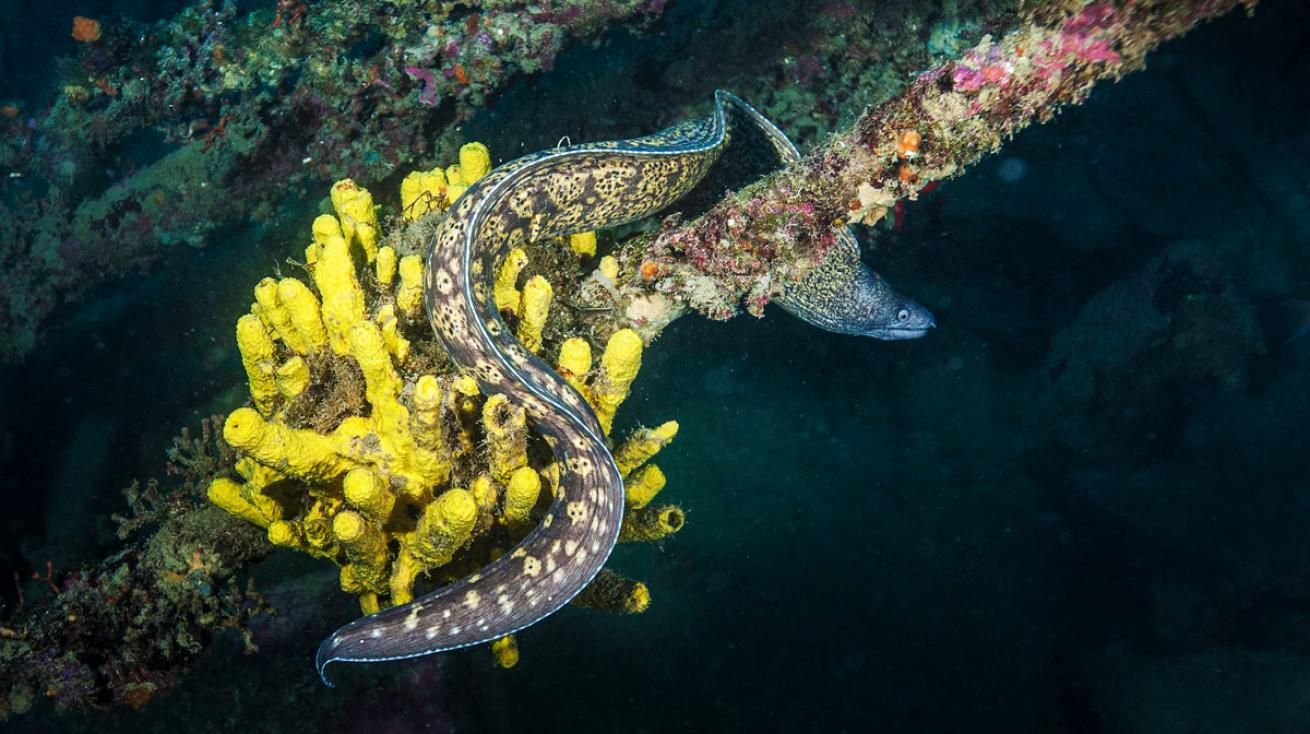
ŽELJKO GRGIĆAn eel coils around bright-yellow sponges and the encrusted remnants of the Taranto wreck in Dubrovnik.
We have arrived at our southernmost destination itching to get in the water. After a grueling battle for parking outside of the Hotel Dubrovnik Palace, we walk into the on-site dive center, Blue Planet. Beneath the hotel pool is a dive locker, carved out of the stone wall like a bunker. A vast staging deck backs up to the sea. Instructors flit from diver to diver like pollinating bees, slinging regs, swapping suits and readjusting tank straps. We’re going to the Taranto wreck, just a couple minutes’ boat ride from the dive center. Finally! A proper shipwreck! We board the lofty inflatable and only have two minutes to sit in antsy excitement before we arrive at the mooring.
Taranto is a hulking beast. The sturdy Italian vessel, built in 1899, hit an underwater mine and sank in 130 feet of water while transporting flour and other provisions in 1943. As we descend two-by-two down the mooring line, my anticipation builds. At 50 feet, the ship comes into view, looking as if it has collapsed backward onto its stern. The bow pokes straight up at 65 feet. Massive metal grates appear next, followed by the steel hull and deck. Swimming head-down, we descend to 130 feet. I turn back and stare up at the bow, the goliath metal face looming over me. The size of the monster is exhilarating. Moments later, my computer alerts me that time is up, and, wreck itch scratched, I head for the line.
One dry day later, the last bit of nitrogen leaves my body and I step onto a plane bound for San Francisco. Three bottles of underwater wine stuffed into a hard case get on board beneath me, the only pieces of the Adriatic I get to take home. The rest are memories packed into hard drives and notebooks and cloud-based storage systems. Croatia’s eccentric charms carried me 6,000 miles from home, and now I carry them back to other divers who have never dreamed of exploring this corner of the world. Diving here is like cracking open a geode. It may appear dull on the surface, all seagrasses and algae-covered rubble, but break into the depths and the sea comes alive, glowing, sparkling and shimmering. Who needs fish?
Planning a Dive Trip in Croatia
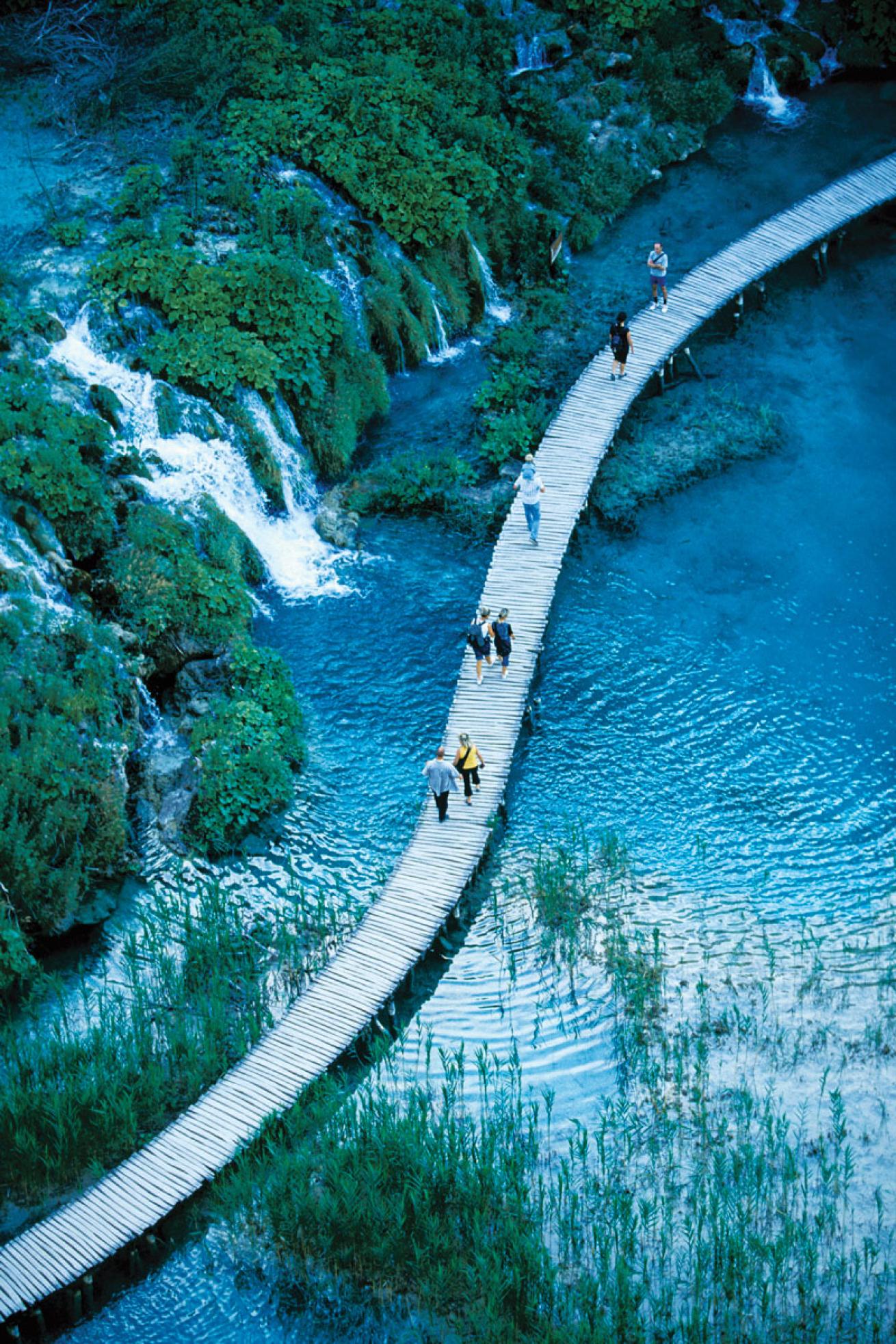
Franco BanfiBoardwalks wind around the jaw-dropping waterfalls of Plitvice Lakes National Park.
Dive centers in Croatia tend to close during parts of the year—October to April—when tourism wanes. Contacting them during this time can be tough. Playing by ear and planning around the high season can save you time and frustration. Do your research beforehand and know which cities and sites you want to visit, then call or email the shops during high season to make definitive plans.
Many sites are weather-dependent so plans cannot be guaranteed more than a few days out anyway. It can be helpful to arrive at each dive center the day before you are scheduled to dive to fill out paperwork, meet the staff and work out any kinks. Getting around with a rental car is the easiest option for transporting gear. It also opens up many opportunities to visit out-of-the-way attractions and less-visited sites. Our rental car cost about $65 USD per day. Keep in mind that parking in major cities, such as Split, Trogir and Dubrovnik, can be a major hassle and very expensive. You may have to park quite a distance from where you’re going and walk into the city. Taxis are affordable here and can help bridge the distance in the more congested cities.
Croatian dive centers have gear to rent, but buying or servicing gear can be nearly impossible. Plan ahead to either rent gear or bring spares in case of malfunction.
NEED TO KNOW
When to Go Most Croatian dive operators are only open during the high season, which is May to September.
Dive Conditions The water temperature hovers between 50 degrees in winter and 75 degrees in summer. The current is minimal, and water clarity is exceptional.
Suggested Training PADI Drysuit Diver, PADI Cavern Diver, PADI Advanced Open Water Diver
Equipment A 5 mm or 7 mm wetsuit with a hood is recommended. Bring a light to bring out the colors on deep dives.
Topside Tips
You can buy essentials, such as SIM cards and international stamps, at Tisaks (tobacco shops).
Many of the old towns have free public Wi-Fi around the entire city, making it easy for travelers to get around and stay in contact.
Tipping around 10 percent is common, but not expected.
The waterfalls and cave formations in Plitvice Lakes National Park are astonishing. Check the park’s website for ticket availability the day before visiting, especially during high season.
Are you ready to step up, help save the ocean, and #LiveUnfiltered at the same time? Sign up for a PADI Open Water Diver course now.

